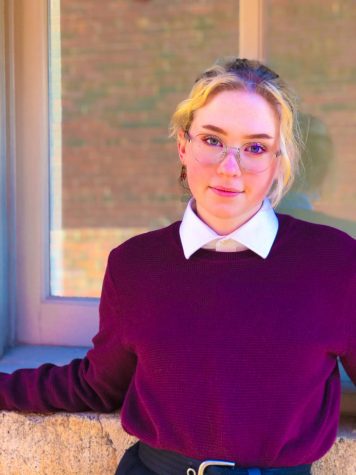Teens struggle with seasonal affective disorder
Seasonal affective disorder (SAD) is best described as a depressive disorder affected by the change of seasons.
“Seasonal affective disorder is a very real illness,” school counselor Jessica Hill said. “We are affected by the amount of sunlight and vitamin D that is out there, and so in the winter months when there’s not as much of that, people experience the very real signs and symptoms of depression.”
The most common kind is Autumn-Winter SAD. As the weather gets colder and the days get shorter, this change can throw the human body out of balance, causing serotonin levels to drop.
“One of the best things that you could do is to be active because when we’re physically active it releases endorphins,” Hill said. “Some of the most common symptoms would be a loss of energy, a loss of interest in activities that were formerly enjoyed, sometimes it can be sleeping more, sometimes it can actually take the form of sleeping less. Really, just decreased motivation in doing the things that need to be done.”
Depressive disorders, major and minor, can affect people of all ages. Common experiences in high school include senioritis, a lack of motivation and energy seniors feel as graduation approaches, and the sophomore slump – when things are overwhelming and cause anxiety. These experiences can also be attributed to a form of SAD as the symptoms overlap.
“[Depression] makes it kind of hard to finish my work because I don’t have the motivation to finish it sometimes,” senior Kat Davis said. “Then my anxiety comes in and is like, ‘No, you have to finish it,’ and it becomes a battle within my own head.”
Quarantine and online school have caused a surge in such feelings for many students. In a normal year, symptoms might be easier to manage, but with a lack of a strong support system caused by isolation, these feelings are being exacerbated.
“I remember [my depression worsened] after Covid-19 started happening,” senior Jennifer Torres-Morales said. “I felt a lot of anxiety, I just felt very overwhelmed and lost a lot of motivation since [March].”
Even if students have not been diagnosed with SAD or another form of depression, they can still feel the effects and show symptoms.
“I felt like I was a pretty good student, I turned in my work [on time], but it’s really hard to turn in assignments when you don’t really care about your future,” Torres-Morales said.
Ways to treat SAD and other depressive disorders without medication include light therapy. This treatment is effective because SAD correlates to a lack of sunlight that causes a drop in serotonin levels.
Light therapy involves a special light that simulates sunlight placed on a tabletop or desk and used for about 45 minutes daily. Of course, not everyone has the funds or means to get this light. Getting fresh air and daily exposure to sunlight is one way to manage symptoms.
“If you only had one thing to do, I would recommend physical activity and exposure to fresh air, and light – light is a big one,” said Hill.
As with every mental illness, the stigma surrounding depressive disorders greatly affects how those who suffer from them are treated. People with depression, whether major, situational, or seasonal, are often considered lazy or standoffish when, in actuality, they are struggling.
“You can’t think [mental illness] away,” said Davis. “Some people think that if you just go and do something, it’s just going to magically go away. That’s not how it works. It’s always there. It’s just [that] sometimes it’s not as bad as other times.”
While this illness may seem impossible to get through, know that you are never alone. Hill has an open door policy and encourages students to visit her anytime during the day if they ever need to talk. Students can also reach out to her via email ([email protected]) or check the Counseling Center’s Instagram page (@svhs_counselors) for more information.

Caitlin Mayhew is a senior in her third year of journalism and one of the editors in chief of the Spartan Shield. She’s an Aquarius sun, Aquarius moon,...


